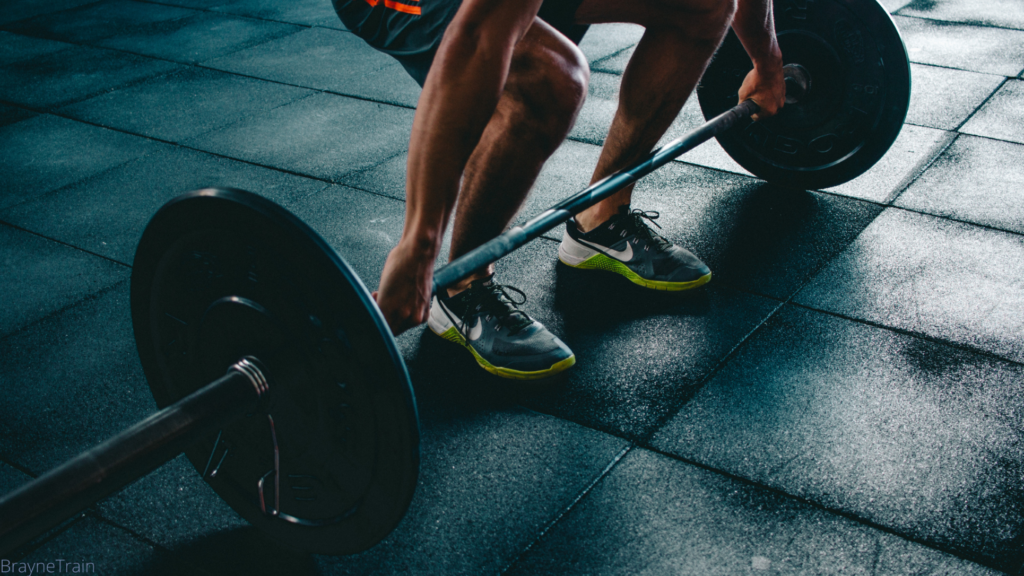
When is The Best Time To Workout When Intermittent Fasting?
Numerous studies indicate that working out during intermittent fasting has many benefits, including fat loss, improved endurance, and better cognitive function.
But when is the best time to workout during your fast?
This blog post will cover everything you need to know about working out during intermittent fasting.
So keep on reading!
When is The Best Time To Workout When You are Intermittent Fasting?
How can you get the most out of your workout by timing your workouts during a fast?
It all depends on what you are looking for to gain from your workout.
For Weight Loss and Increased Fat-loss:
For Weight loss, you should workout in the morning.
When intermittent fasting or any other type of fasting, your body enters a Fight or Flight mode due to the starvation response.
HIIT(High-intensity interval training) also triggers fight or flight. The fight or flight response, in turn, triggers fat oxidation and growth hormone, which both result in fat loss.
Therefore working out during intermittent fasting can double the effects of fat loss.
If your intention for working out during your intermittent fasting is to lose weight, the best time to workout is first thing in the morning.
Studies indicate that working out in the morning on a fasted stomach maximizes fat oxidation.
Keep in mind that you will also have more energy in the morning, so your performance will also be better.
To Build Muscle:
To build muscle, workout towards the end of your fast and right before breaking your fast.
If your intention for working out while intermittent fasting is to build muscle, studies suggest it is best to wait until near the end of your fasting period to exercise.
Break your fast after your workout, and be sure to eat in a calorie surplus when breaking your fast in order to help muscle gain.
Keep in mind that your performance will slightly decrease if you wait until the end of your fast to workout; however, it will not affect the benefits of the workout and muscle gain.

Types of Workout During Intermittent Fasting?
Cardio:
Studies indicate Cardio is much more effective during a fasted state because insulin levels are at baseline (very low).
Low insulin helps increase fat oxidation, meaning more fat loss.
Doing your cardio workout during the deepest state of your fasting will give you much better results in terms of fat loss.
Studies show blood flow to the stomach area is at its highest during the deepest stage of your fast; therefore, doing cardio during that time will increase belly fat loss.
Weight Training
Towards the end of your fast, your body’s insulin sensitivity is at its highest.
Weight training towards the end of your fast and breaking your fast with a good amount of protein, such as lean meat or organic, pasture-raised eggs, will give you the best result for muscle gain and nutrient absorption.
Good quality lean protein helps spike insulin and increase mTOR levels. (mTOR is a kinase that promotes activation of muscle building.)
Increased mTOR means increased muscle building.
Resistance Training.
Doing a 30-40 minute resistant training session in the morning on a fasted stomach, or at least 3-4 hours before breaking your fast, will give you the best result in fat loss and muscle preservation.
BFR Training (blood flow restriction training)
BFR training is a form of weight training where you use pressure cuffs around specific areas of your body, usually around the legs or the arms, to methodically restrict blood flow to particular body areas for maximum benefit.
The science behind it suggests that BFR helps deprive oxygen of that specific body area, which stimulates the lactic acid response, increasing metabolic recovery and muscle growth.
BFR training towards the end of your fast can help increase muscle growth.
However, be sure to do your research on BFR before attempting this type of training.

Who Should Not Workout During Intermittent Fasting?
The Training Low Concept:
The Train Low concept was based on the idea that if individuals, especially athletes, workout in a fasted state, training in a fed state will become much easier due to the presence of carbohydrates for fuel.
However, studies suggest differently.
The body’s preferred fuel source is ketones (fat).
Based on scientific evidence, when working out in a fasted state, the body uses ketones (fat) as the primary fuel source. Doing so consistently can make the body insufficient in using carbohydrates as fuel.
Therefore, those used to training on a fasted stomach do not necessarily respond well to working out in a fed state.
Professional Athletes
When it comes to professional athletes training for major competitions such as the Olympics, it’s best not to workout solely in a fasted state.
Therefore, if you are an athlete and are used to training in a fasted state, it’s best to add in 2 or 3 Fed-state workouts during the week in order to keep your body efficient in using both fat and carbohydrates as fuel.

Benefits of Working Out During a Fast:
- Increased Fat Loss
- A study published by the British Journal of Nutrition concluded that “Aerobic exercise performed in the fasted state was associated with a significant increase in fat oxidation during exercise compared with the fed state.”
- In other words, doing cardio workouts in a fasted state results in increased fat loss compared to working out in a fed state.
- Improved Insulin Sensitivity: Working out during intermittent fasting helps glucose utilization, lowers insulin, and improves insulin sensitivity.
- In other words, if you workout during a fast, insulin levels are stabilized and are more efficient in uptaking glucose from the blood. This leads to better use of carbohydrates and, therefore, less fat gain.
- Muscle Growth.
- In the European Journal of Applied Physiology, a study concluded working out in a fasted state increases protein synthesis.
- Less Weight Gain.
- Working out while fasting makes your body more sensitive to insulin, which means a lower chance of fat storage.
- In addition, working out during intermittent fasting helps promote the burning of stored fat, which results in significant weight loss.
- Improved Cognitive Function
- Working out on a fasted stomach is a brain booster and improves memory and brain function.
- Exercising during a fast also increases blood flow to the brain, delivering essential nutrients and oxygen. This allows the brain to work more efficiently and can even help protect it against age-related damage.
- Ketosis:
- Working out on an empty stomach promotes ketosis.
- Ketosis is the state in which the body switches its primary fuel source from sugar to fat and produces ketones as the by-product.
- Ketones are the superior form of fuel for the body and the brain.

Do You Lose Muscle if You Workout While Intermittent Fasting?
The simple answer is No!
Working out during a fast does not lead to muscle loss; in fact, resistant training in a fasted state can help increase muscle preservation.
Working out on an empty stomach might sound counterintuitive, but there is a solid scientific rationale behind it.
When you exercise, your body burns right through its glycogen storage.
Glycogen is a carbohydrate stored in your muscles and is used for short bursts of high-intensity activity.
When you are working out on an empty stomach, your glycogen stores are depleted, which forces your body to burn fat for fuel instead.
Burning fat for fuel helps build lean muscle mass, and that’s why working out on an empty stomach can be beneficial for muscle growth.

In addition, Medicine & Science in Sports & Exercise Journal did a study in which two groups fasted overnight. One group did a 50-minute moderate resistance training on a fasted stomach in the morning.
The group that did the resistance training increased muscle protein synthesis 3.5 hours after the workout, which means the workout helped preserve more muscle compared to the control group.

Moreover, a study published by The Journal of Applied Physiology indicated that training in a fasted state produces 2X more P70S6K.
This specific enzyme allows muscle building to occur, and this enzyme reaches its peak within 1 hour after exercising.
Bottom Line:
So there you have it – working out on an empty stomach is a great way to burn fat, build muscle, and boost your intelligence. I hope this blog post helps you make an informed decision about working out while intermittent fasting. Be sure to check with your doctor before starting a fasting regimen also, If you’re looking for more ways to improve your health and fitness, check out our other blog posts. Thanks for reading!
References:
Bell RA, Al-Khalaf M, Megeney LA. The beneficial role of proteolysis in skeletal muscle growth and stress adaptation. Skelet Muscle. 2016 Apr 6;6:16. doi: 10.1186/s13395-016-0086-6. Erratum in: Skelet Muscle. 2016;6:19. PMID: 27054028; PMCID: PMC4822268.
Vieira AF, Costa RR, Macedo RC, Coconcelli L, Kruel LF. Effects of aerobic exercise performed in fasted v. fed state on fat and carbohydrate metabolism in adults: a systematic review and meta-analysis. Br J Nutr. 2016 Oct;116(7):1153-1164. doi: 10.1017/S0007114516003160. Epub 2016 Sep 9. PMID: 27609363.
Gillen JB, Percival ME, Ludzki A, Tarnopolsky MA, Gibala MJ. Interval training in the fed or fasted state improves body composition and muscle oxidative capacity in overweight women. Obesity (Silver Spring). 2013 Nov;21(11):2249-55. doi: 10.1002/oby.20379. Epub 2013 May 31. PMID: 23723099.
Kim D, Singh H, Loenneke JP, Thiebaud RS, Fahs CA, Rossow LM, Young K, Seo DI, Bemben DA, Bemben MG. Comparative Effects of Vigorous-Intensity and Low-Intensity Blood Flow Restricted Cycle Training and Detraining on Muscle Mass, Strength, and Aerobic Capacity. J Strength Cond Res. 2016 May;30(5):1453-61. doi: 10.1519/JSC.0000000000001218. PMID: 26439780.
Vechin, Felipe C.1; Libardi, Cleiton A.1,2,3; Conceição, Miguel S.2; Damas, Felipe R.1; Lixandrão, Manoel E.1; Berton, Ricardo P.B.2; Tricoli, Valmor A.A.1; Roschel, Hamilton A.1; Cavaglieri, Claudia R.2; Chacon-Mikahil, Mara Patricia T.2; Ugrinowitsch, Carlos1 Comparisons Between Low-Intensity Resistance Training With Blood Flow Restriction and High-Intensity Resistance Training on Quadriceps Muscle Mass and Strength in Elderly, Journal of Strength and Conditioning Research: April 2015 – Volume 29 – Issue 4 – p 1071-1076 doi: 10.1519/JSC.0000000000000703
Van Proeyen K, Szlufcik K, Nielens H, Pelgrim K, Deldicque L, Hesselink M, Van Veldhoven PP, Hespel P. Training in the fasted state improves glucose tolerance during fat-rich diet. J Physiol. 2010 Nov 1;588(Pt 21):4289-302. doi: 10.1113/jphysiol.2010.196493. PMID: 20837645; PMCID: PMC3002457.




